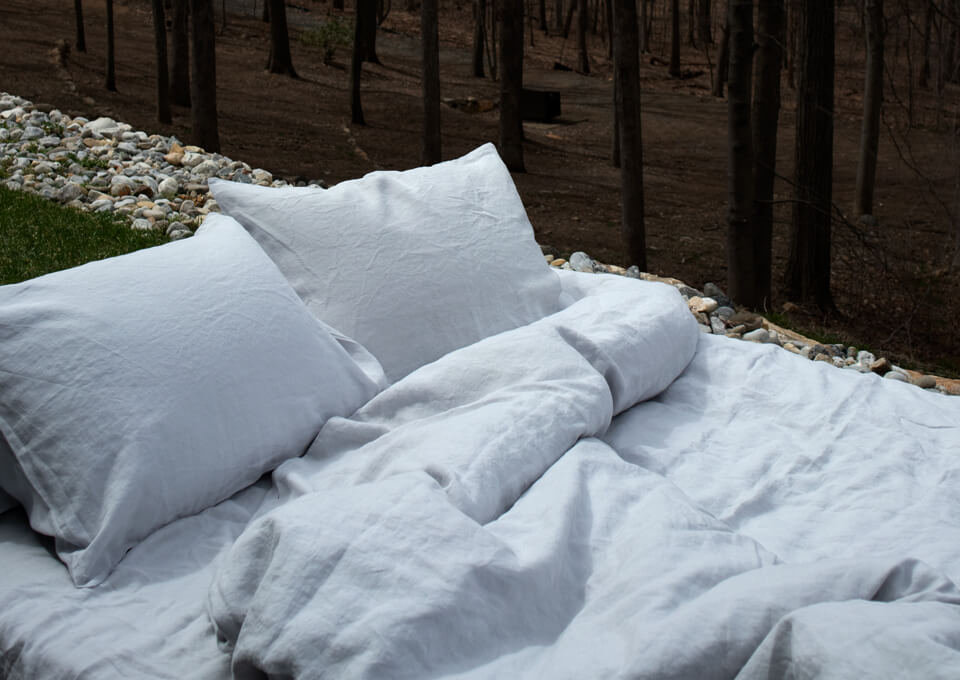WHICH WASH IS THE RIGHT WASH?
There are two (2) primary ways that linen is treated during the manufacturing process - stone washing, an older technique used for decades in the linen industry, and enzyme washing - a relatively newer technique that has been taking the textile industry by storm.
When considering the perfect bed linens, it is important to be educated on how your linen is actually being treated during the creation process. The type of wash used on the fabric greatly impacts its longevity and quality overtime. We break down the two main techniques and which is the superior one when choosing the right bedding for your home.
WHAT IS STONE WASHING?
The primary effect of stone washing is to give linen a more “worn-in” effect. The purpose is to give the fabric a slightly faded color and vintage feel.
Actual stones such as pumice and volcanic rock are used in the washing process. As the wash cylinder rotates, cloth fibers are repeatedly pounded and beaten as the tumbling stones ride up the paddles inside the drum and fall back down onto the fabric. Besides giving the fabric a worn-out, comfy look, stone washing is also meant to increase the softness and flexibility of an otherwise rigid cloth. The goal is to loosen the weave and give the fabric a softer feel and an edgier, more vintage aesthetic.
There is an issue with stone washing. While the stones make the fabric more soft, overtime the material becomes too thin and rips. Stones are harsh and wear down the fabric, which actually ruins the quality of the material. For the last 10 years, the tendency for the linen industry has been to move away from stone washing to a technique that does not mechanically damage the fabric.

WHAT IS BIO-ENZYME WASHING?
Enzymes are proteins that speed up chemical reactions. They are present in every living thing and are essential for biological reactions to occur. The most common use of these catalytic proteins can be found in laundry detergents. Traditional use of enzymes in laundry detergents involved those that degrade proteins found in stains from grass, oil, food, etc. These enzymes are also completely natural and are designed to make cleaning more environmentally friendly.
Enzyme washing achieves the same effect of stone washing with the help of special organic chemistry. Throughout the course of the washing process, enzymes increase the abrasion of the upper layers of linen fabric, achieving an effect similar to stone washing without the harsh and damaging effects. Think of it as a relaxing, enzyme-enriched bath for your fabric as opposed to a harsh rough and tumble with some rocks. The issue with stone washing is that it is too harsh on tight woven and gentle linen fabric- the harsh pumice stones can actually destroy the delicate material by loosening the weave too much.
The resulting effect is a linen that becomes more mild and soft overtime without thinning out too much, decreasing the chance of long term wear and tear. The material attains a silky and substantial feel, with breathability, perfect weight, and transparency.

NEXT TIME YOU’RE LOOKING TO UPDATE YOUR BEDROOM…
Being an informed consumer means knowing what goes into the production of your product. Understanding how linen is treated during its initial manufacturing process will help you make the best possible decision. Choosing a fabric that is both soft and breathable while maintaining its durability is absolutely key. A fabric that has been properly treated will treat you right in return!
Artist : Christopher Choi @yellowdanchu
Article by : Sharon Krasni


